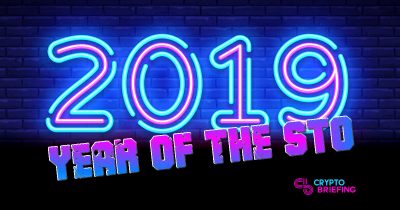2019: The Year Of The STO?

Share this article
In 2017, we witnessed massive growth in Initial Coin Offerings (ICOs), and this spilled into 2018 with over $13.7 billion USD raised by ICOs in the first half of this year. Although these numbers still don’t compare to traditional venture capital investment, it proves that this crowdfunding model is expanding. The rise of ICOs has not only taken the traditional world of finance by storm, but has garnered attention from even those most wary of the sector.
Although ICOs have seen great success in their own right, the nature of the cryptocurrency market is ever-evolving. As recent market volatility has left investors resistant to the ICO model, we have witnessed a mass shift towards Security Token Offerings (STOs). This new model is not only a reaction to the needs of consumers, but it is commanding the attention of the industry as a potentially more regulated and secure investment option.
ICOs, in simple terms, are a coin offering from a company with the goal of fundraising for a particular project. Most ICOs to date have been rolled out, at least partly, with the goal of bringing said project to fruition.
Solving The Problems With ICOs
However, what makes this model tricky is that a lot of tokens themselves have no utility because the protocol or platform they are to operate upon does not, in fact, exist quite yet. It needs also to be considered that ICOs are often largely unregulated, or poorly regulated, which has left many investors at risk to scams or fraud.
What makes an STO similar to an ICO is that it is an offer made on behalf of a project to the public. Yet STO participants are investors, as opposed to users, who pay and in return receive a security. This security can be a equity, bond or stock represented by a token.
Since these securities are backed up by the company’s assets, profits and revenue, this puts the investor at ease as the token holds the company’s assets. When it raises, they are refunded, which not only gives the token holder the current market value of the token – which will be more than the initial price – but as well the token will be represented as a profit in the their account.
Securing Investor Protections
As a result, the STO model is the more stable investment option. Investments are also more frequently covered by securities laws.
Many advocates of ICOs are now turning to STOs to satisfy the need of the consumer. STOs offer legal rights such as voting or revenue distribution. In addition, they offer a much more transparent fundraising opportunity as the actual tokens are asset-based.
As a result, we are seeing more investors finding favour with them, which in turn is good news for the sector as a whole. As funding is often the biggest hurdle standing in the way of success for many blockchain startups, this model holds significant potential for the future of blockchain.
An Industry Turning Point?
While ICOs may have been the dominant players in the crowdfunding market so far, the need for more stable and safe investment opportunities is paving the way for STOs to take over as we head into 2019. As trust builds and STOs continue to establish themselves, we will see the bulk of not only seasoned, but also first-time investors moving towards this model.
Further to this, securities will be a significant factor in the crypto world, with traditional investors seeking routes of investment in traditional stocks, ETFs, and bonds on platforms such as DSTOQ. STOs may not be the only solution – but they may provide a turning point for the industry on whole.
This article is presented as part of the Crypto Briefing focus on Security Tokens and Digital Assets.
Crypto Briefing does not accept any payment or financial benefit from expert guest authors.
Share this article
